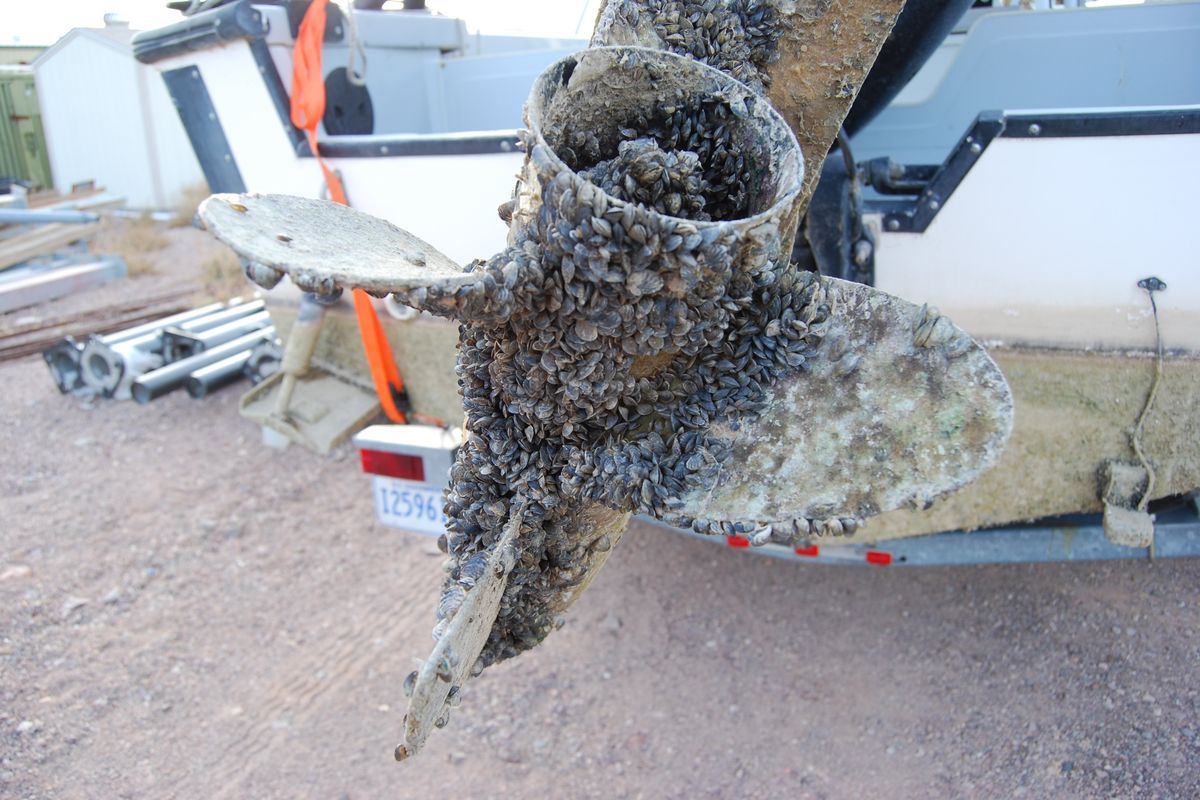Washington shoring up aquatic invasive species program

A cash infusion is going to help Washington shore up its forces in the battle against invasive zebra and quagga mussels.
An allocation of $1.81 million from the Washington Legislature will allow the Washington Department of Fish and Wildlife to leverage matching funds from the Army Corps to support the agency’s aquatic invasive species program, which operates boat check stations and a handful of decontamination sites around the state.
That amounts to a total of $3.62 million that will become available on July 1. WDFW plans to use the money to hire more people for its boat inspection stations and to prepare for the possibility of mussels taking hold in the state. It will also let the agency look at adding another mussel-sniffing dog.
It’s all part of the push to fend off a potential invasion of the tiny mollusks, made more urgent by their detection in the Snake River in southern Idaho last September.
“With this new threat from Idaho, we really needed additional funds,” said Justin Bush, WDFW’s aquatic invasive species policy coordinator.
Zebra and quagga mussels are tiny aquatic organisms that bind to hard surfaces like boat propellers. They originated in Europe and are believed to have come to the U.S. through ballast water from large ships.
They were first found in the Great Lakes in the 1980s and have since spread all over the country.
An infestation can cause massive damage to hydroelectric dams and irrigation infrastructure. They can also disrupt aquatic ecosystems. Bush said they’re widely considered the most significant invasive species threat to the state.
The quagga mussel find near Twin Falls, Idaho, last year marked the first time the organisms had been detected in the Columbia River drainage. Idaho officials treated a six-mile stretch of river in an attempt to kill off the mussels.
Bush said that after the detection, WDFW staff went to the Snake and sampled the water to see if any veligers – the larval form of mussels – had drifted that far downstream, a 375-mile journey that would take about a week. No mussels were detected.
Watercraft are the most common vector for moving the organisms. Several states run boat check stations aimed at catching infested watercraft before they launch.
Washington has four such stations – one each in Clarkston, Pasco, Cle Elum and on Interstate 90, just west of the Idaho border. Last year, the stations checked 58,000 boats, 25 of which were carrying mussels. So far this year, the stations have checked 17,500 boats, including seven that were infested.
The stations have typically been funded through revenue from vessel licensing fees and out-of-state boat permits. Bush said the budget was typically under $2 million, so money that will become available next week represents a major boon for the program.
Bush said it will allow the agency to hire at least six more people to add to the 36 that work in the program. Bush said the new hires will likely be split between Spokane, Clarkston and Pasco.
He also said the state plans dedicate staffers to sample the Snake River in Washington for mussels using high-tech methods to determine whether any of the organisms from the Twin Falls area drifted farther downstream.
They’re also working on how they’ll respond if mussels are detected in Washington, such as identifying filtration systems that could be used on irrigation infrastructure.
Prevention, however, is still the focus. Boaters of all kinds – from kayaks to yachts – should clean, drain and dry their watercraft.
“We’re still at the point where we can prevent this problem and we need everyone’s help to do it,” Bush said.